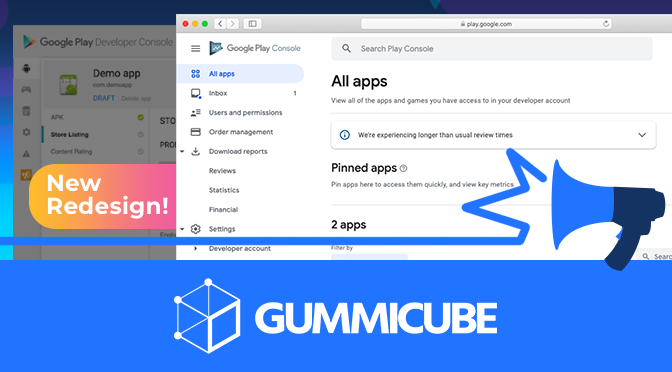
App Store Holiday Schedule 2020
Posted on November 23rd, 2020
When is the App Store Holiday Schedule 2020? Learn about the dates of this year's shutdown and how to prepare.

Apple recently announced the new iPad Pro, and the information they’re revealing has users and developers excited. As such, it’s important to understand what the new iPad Pro is bringing and what developers need to do to prepare and utilize it, along with how it will impact their App Store Optimization.
The 3rd generation iPad Pro boasts a Liquid Retina Display featuring “precision-milled glass, advanced pixel masking, sub-pixel antialiasing and a new backlight design.” This includes color support like True Tone and anti-reflective coating. Additionally, ProMotion technology automatically adjusts the display refresh rate up to 120Hz. In short: it has advanced and impressive graphics. However, this means that developers will want to capitalize on the graphics for their mobile apps. Their apps should be updated to ensure they look good on the new display and their creatives should include screenshots for the iPad Pro. For the 12.9-inch version, the screenshots should be 2048 x 2732 pixels, and the app previews should be 1200 x 1600. These screenshots will scale for the 11-inch version.
One of the biggest parts of the iPad Pro 3 announcement is the power of the A12X Bionic processor that powers it. The new chip is built on a 7-nanometer process and contains over 10 billion transistors, comprising a seven-core GPU and an eight-core CPU with four performance and efficiency cores each. This makes it up to 35% faster than the iPad Pro chip from last year’s devices, while a new performance controller chip lets it run all processor cores at once for a 90% increase in multicore performance speed. With these improvements, Apple is claiming that it’s faster than 92 percent of all portable PCs. Additionally, the A12X features machine learning from Apple’s eight-core Neural Engine. This powers machine learning tasks like facial recognition, Siri Shortcuts and Augmented Reality. With this level of processing power, developers can create apps for the iPad Pro with more advanced and powerful functions. Even older apps should be seeing an increase in processing speed with it, so new and old apps can start adding new functions and features that utilize the improved speed and machine learning the A12X chip has to offer.
In addition to improved processing power and graphics, Apple is adding new tools and apps with the new iPad Pro. Photoshop is the biggest announcement, with Photoshop CC and similar editing apps built for the iPad. To support this, Apple has also announced a second-generation Apple Pencil, which magnetically attaches to the iPad Pro while charging. It uses tap detection to switch between functions, so users can switch between the pencil and eraser modes, colors and more by tapping the pencil. Another periphery device is a new Smart Keyboard Folio, which can be used as a protective screen then turned into a base and keyboard for the iPad Pro. Apple also states that the processing power, advanced cameras and sensors can improve the Augmented Reality (AR) experience the device can provide. This is helped by its machine learning technology, which provides faster plane detection to properly place objects in AR according to the user’s surroundings.
Every new technology and improved device provide developers with new opportunities. AR apps can capitalize on the improved Augmented Reality functions, paint and photo editing apps can utilize the new Apple Pencil to make their apps easier to use and any app can enjoy improved speeds on the iPad Pro 3. However, it will take work for apps to be upgraded accordingly. Developers must update their iPad apps to support iOS 12 and the new iPad Pro by March 2019, the same date as iPhone apps must support the iPhone XS Max. Developers will need to build their apps for iPads with the iOS 12.1 SDK. While doing so, they need to remember that the new devices do not have a Home button at the bottom. This changes how much space on the screen the edges of the app take up, so developers should design their apps accordingly. Testing and updating will be essential to ensure the apps respect the newly defined safe areas and address any UI issues their apps may have. As part of the updates, developers should look over their App Store Optimization and ensure that everything is designed to work with iPad Pro 3 devices. This means the screenshots are optimized to look good on the devices and highlight what they can do, while the description calls out how the app works with all the upgrades the new iPad Pro provides. It will be critical to track rankings, search trends and competitors, such as searches for AR or photo editing apps. To stay with and ahead of trends, it will be important to monitor the changing landscape of the App Store and update accordingly. There’s a lot to look forward to for the 3rd generation iPad Pro, yet this also means that developers have a lot to prepare for. While March may be the deadline, there’s no time like the present to start preparing your app and App Store Optimization for what’s to come.

When is the App Store Holiday Schedule 2020? Learn about the dates of this year's shutdown and how to prepare.

Apple's App Store Guidelines have strict privacy requirements. Developers now must provide information to users on the App Store listing regarding the data they access.

The Google Play Developer Console has been updated with a new design and adjusted tools. What's different, and how will it impact App Store Optimization?